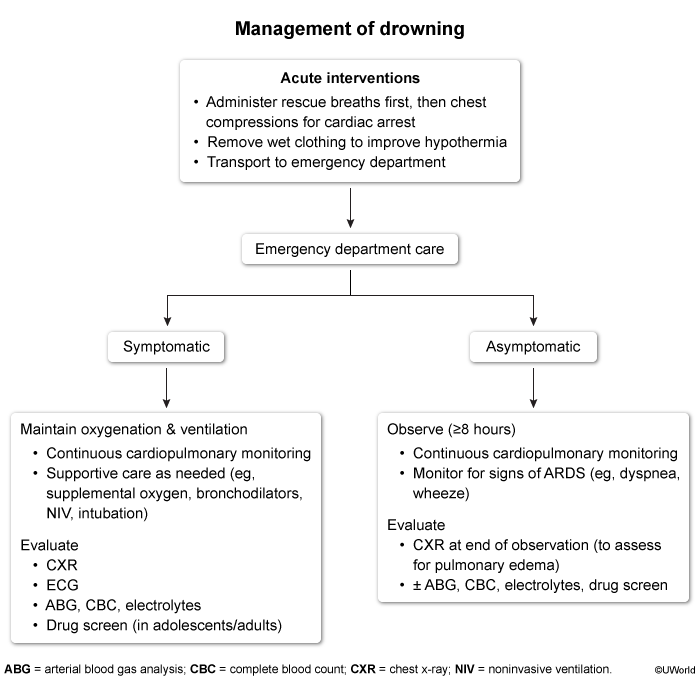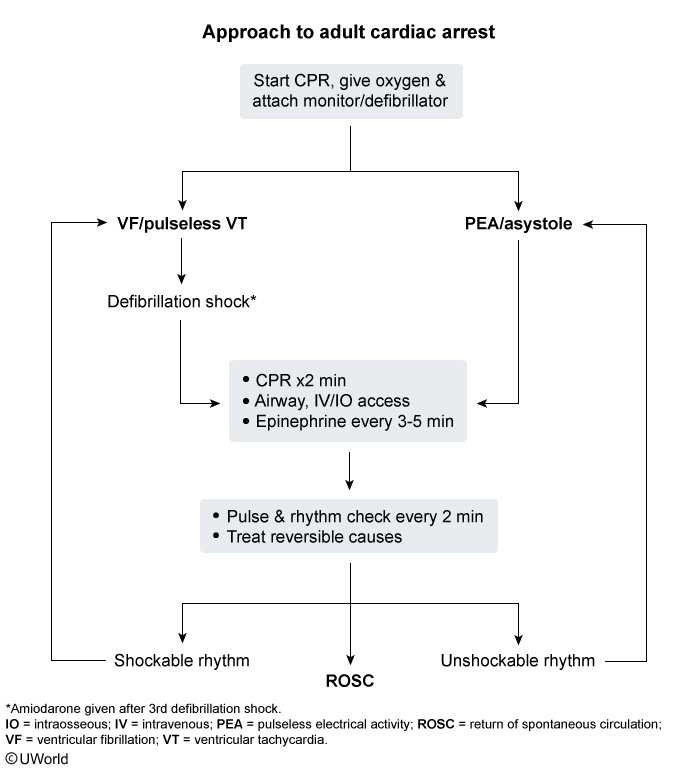Drowning (Submersion Injury)
Article Sections
Introduction
Drowning is defined as respiratory impairment due to submersion in liquid. It is most common in children age <5 and is often due to unsupervised access to water (eg, pool). Aspiration of water during submersion impairs oxygen exchange in the alveoli, resulting in hypoxemia, which can quickly lead to cerebral ischemia and cardiac arrest. Potential complications associated with nonfatal drownings (eg, rescued prior to death) include acute respiratory distress syndrome (ARDS) and hypoxic brain injury.
Risk factors
- Age <5: Very young age is related to inadequate swimming ability and lack of supervision; in this population, it is important to consider nonaccidental trauma (eg, abuse, neglect).
- Adolescence and male sex: Both groups tend to engage in riskier aquatic activities.
- Comorbid medical conditions: Seizure disorder and paroxysmal cardiac arrhythmias can lead to sudden loss of consciousness while in or around bodies of water. Neuromuscular disorders can impair coordination and strength while a patient is swimming.
Continue Learning with UWorld
Get the full Drowning (Submersion Injury) article plus rich visuals, real-world cases, and in-depth insights from medical experts, all available through the UWorld Medical Library.
Figures

Figure 1

Figure 2
Tables
Table 1